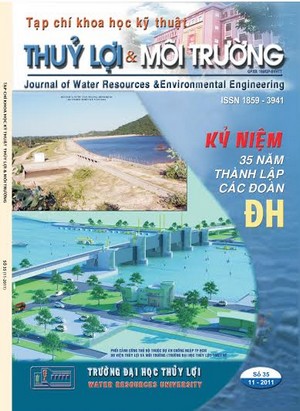Hydroxyl radical (.OH) generated during oxidation of pyrite (FeS2)
Abstract
Pyrite - the main composition in acid sulfate soil - was found able to degrade organic pollutants such as trichloroethylene, chlorobenzene. However, the mechanism involve in this process still unclear. This paper aimed to explore why pyrite able to do this job. The laboratory study detected hydroxyl radical (.OH) produced from pyrite suspension under different conditions. This is very strong radical, which can degrade several types of organic compounds. Quantity of .OH was calculated by comparing radical generated from pyrite suspension with the radical produced from hydrogen peroxide (H2O2) solutions catalyzed by horseradish peroxidase (HRP). In pyrite solutions under aerobic condition, amount of .OH released increased with time. There was accumulation of radical in aqueous solution with time. Under anaerobic condition, amount of radical produced was insignificant compare to the amount produced under aerobic condition. The effect of different initial oxygen concentrations on the production of radical was visible after 168h reacted. At the beginning stage when oxygen was still available in all systems, the amount of hydroxyl radical produced was similar for all different initial oxygen concentrations. However, at the later stage when oxygen was consumed by the pyrite oxidation reactions, the system has higher initial oxygen concentration, the more radical was detected. The generation of hydroxyl radical can play the central role in using pyrite to degrade organic pollutans.

